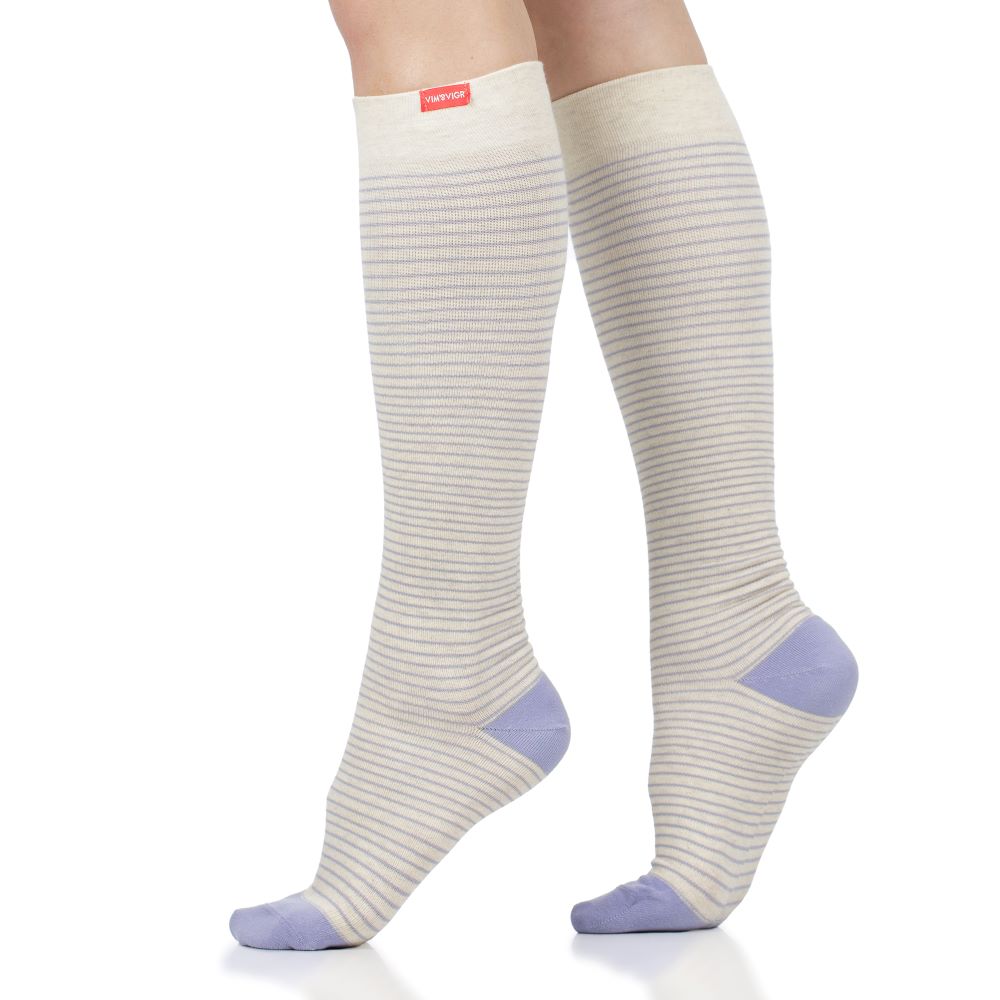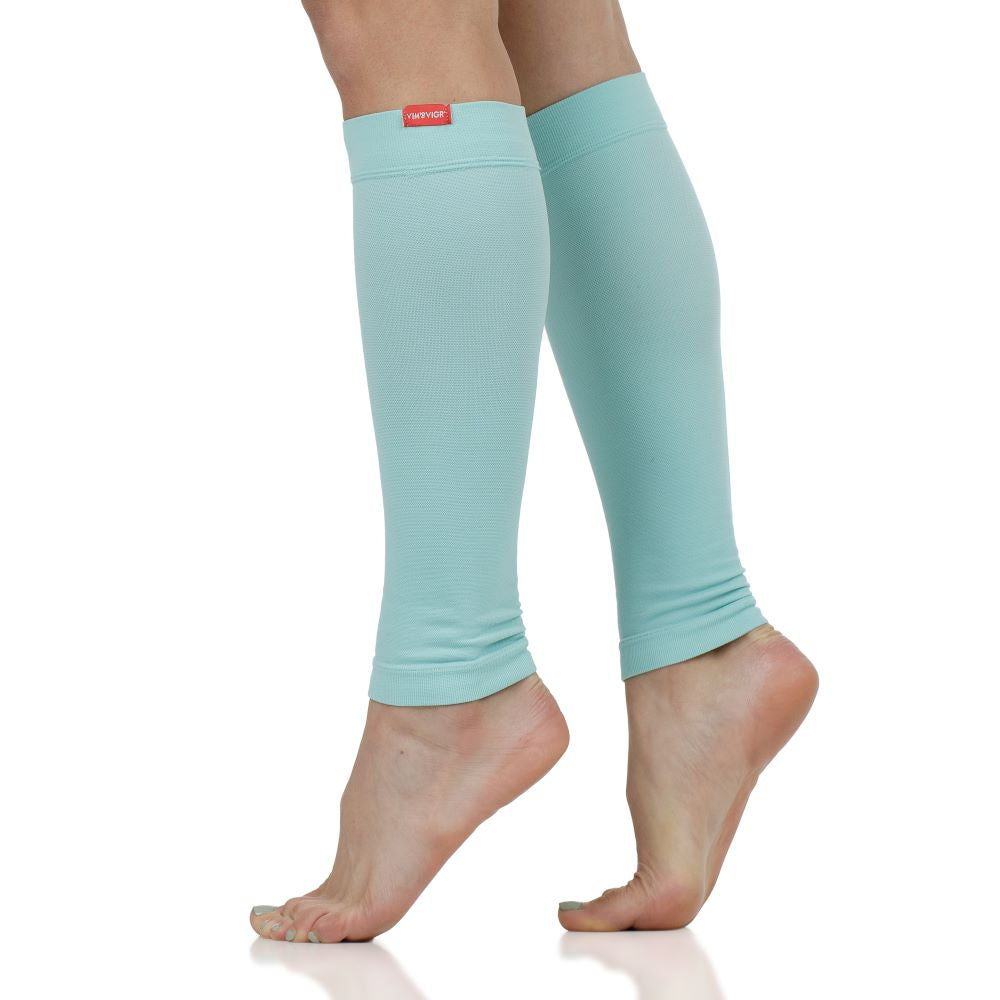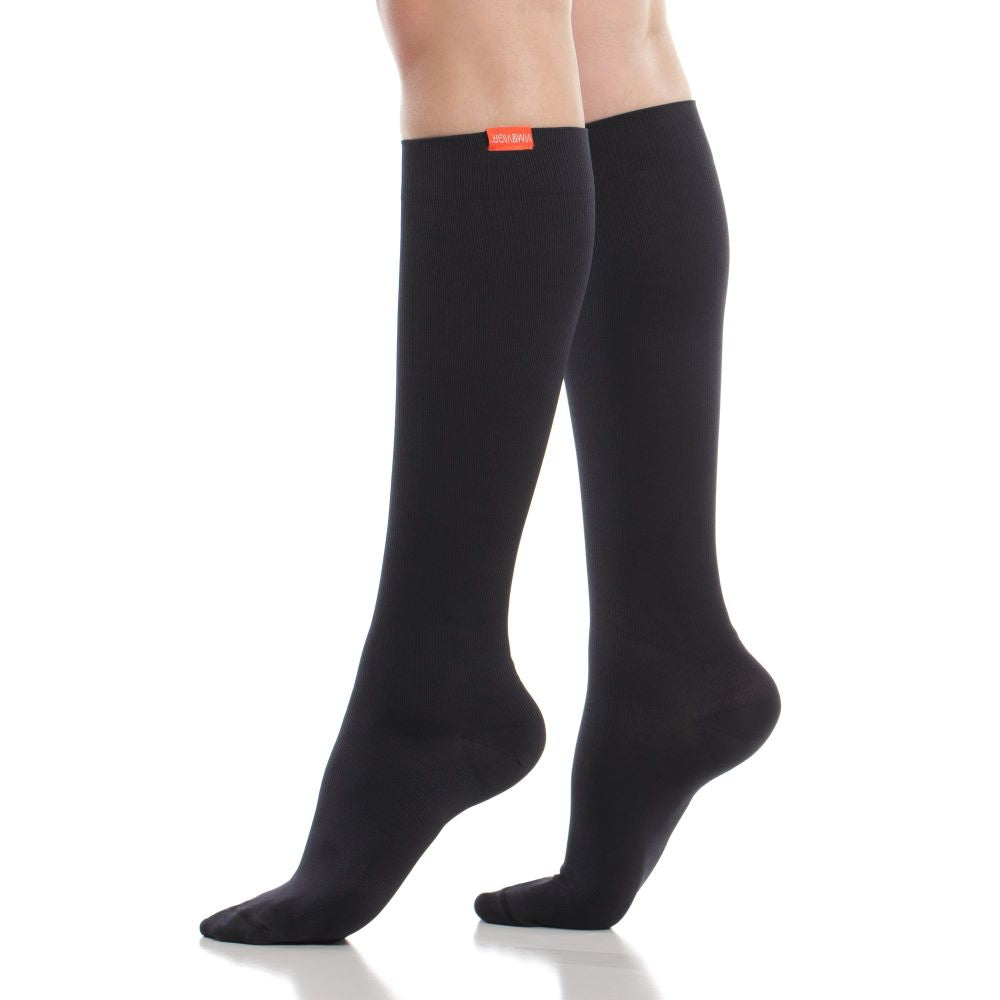How Long Do Compression Socks and Stockings Last?
Once you’ve bought your first pair of compression socks, you’re halfway to feeling energized and soothed no matter what challenges life throws at you. Whether hiking, running, recovering from surgery, or just setting off on a very long flight, compression wear keeps the blood flowing normally through your lower limbs, avoiding swelling, aches and pains, and helping you recover quicker. But, once the investment’s made, you’re probably wondering: How long do compression socks and stockings last?
Wearing the correct size and compression levels for your socks and stockings is the first step to ensuring a long life, as they’ll fit just right and won’t be unnecessarily pulled or bunched. And, if you care for them correctly by washing them regularly, putting them on carefully, and generally making the most appropriate choice of materials for your activity, then you’ll enjoy your compression socks for much longer.
In this article, we’ve prepared a quick guide on when to replace your socks, how to know if they’re past their best, and how to care for them so you don’t need to replace them as often.

How Often Should Compression Socks Be Replaced?
Compression therapy can help with a range of conditions, from varicose veins to keeping your legs fresh during long periods of time when you’re on your feet or cannot move (like when you’re bed-ridden or on a long flight). However, you can’t just wear them forever. Just like any garment, there will come a time when the fabric starts to deteriorate or you just don’t get the same benefits anymore.
Depending on the medical conditions you’re treating with your compression socks, you can expect them to last around 3 to 6 months. Of course, if you spend a lot of time lying in bed, you will not use the fabric on your compression socks as much as if you wear them for running, for example. So, if you wear your compression stockings for active days, you may cause them to deteriorate in places you’d normally see socks show wear and tear, like around the toes and heels. But, if you lie down or sit in your compression socks without moving too much, this is less likely to happen.
One thing that will determine a replacement for your compression garments should always be the pressure levels exerted. If you start to feel that your socks are no longer offering you that gentle massage, applying pressure when you put them on, then it’s probably time to look for a new pair.
Signs That Your Compression Socks Need Replaced
So, you’re probably wondering how to tell when your compression socks may need to be replaced. If you suffer from medical conditions like chronic venous insufficiency, it’s essential to ensure your socks exert the right level of pressure onto your legs to support healthy blood flow. And, if you are no longer getting enough pressure applied to your lower limbs, you’ll start to notice swelling and discomfort that you thought you had said goodbye to.
To avoid all that, here are a few telltale signs that you need to replace your favorite pair of compression socks:
- They are not as tight as they used to be - If you’ve only been wearing your socks for 1-2 weeks, there’s a chance you find them less constricting because you’re getting used to the feeling of compression; however, if you notice a lack of pressure after you’ve been wearing your socks for a few months, and you can tell the difference compared to wearing them previously, then it may be time to change them;
- Loss of elasticity - As you put on your compression socks, your hands normally encounter some resistance, but also some flexibility if you use them correctly. If the material is now limp, that means you’ll run the risk of the socks rolling down and you’ll get less pressure applied to your feet, ankles and calf muscles;
Finally, bear in mind that the compression level of socks or stockings needs to adapt to your requirements and medical conditions. If, for example, you start out wearing medical grade compression socks as prescribed by a doctor, but your original condition changes, then you may want to switch to lighter pressure levels. This doesn’t necessarily mean your original compression socks have been worn out, it’s more a case of changing priorities.

Do Compression Socks Lose Compression Over Time?
Good quality compression socks should retain their compression levels for a decent period of time. However, all hosiery deteriorates over time. Moreover, you need to pay particular attention to how worn compression socks become, since applying the relevant compression levels to your legs is the main reason you got them in the first place.
To ensure that compression socks support blood flow, reduce the risk of developing blood clots or of swelling and discomfort, and help your muscles recover from hard efforts after exercise, check that your socks are still firm, yet gentle on your lower limbs. After 3-6 months of regular wear, you may need to change them. However, if you wear your socks less regularly, you could easily keep them for a year or longer - just check for the signs we’ve outlined above to see if they’re still the best pair for you when you next put them on.
How Long Do Compression Socks Last Between Washings?
Washing and caring for your socks carefully is essential to them retaining their compression levels and elasticity. So, the first thing to pay attention to is how you wash your socks to avoid damaging them:
- We recommend washing your socks after every use - rotating between pairs will ensure a longer life, too;
- Machine wash in cold water only and don’t use strong detergents;
- Opt for a delicate setting if possible;
- You can also hand wash your socks relatively easily, especially if made of quick-drying fabric like Merino wool;
- Always line dry your compression socks - the dryer can cause them to shrink and will affect their elasticity.
If washed correctly and left to air dry, compression socks will maintain their properties and provide you with all the benefits you’ve come to expect from them.
How to Make Your Compression Socks Last Longer
Aside from proper care, compression socks will also last longer if they’re made from good quality materials that are adapted to the activity you plan to wear them for. You can also ensure your socks are in the best condition for longer if you are careful about how you put them on. Here are our recommendations to prolong the lifespan of your socks and stockings.
Wash Them Properly
It’s important to always keep your compression socks clean in between wearing them. We recommend washing the socks after every use, on a gentle cycle in cold water if you’re using a washing machine. You can also use delicate detergent and soak and wash by hand.
Always leave your socks to air dry so they don’t shrink in the dryer. Most compression sock materials will dry quickly (Merino wool, Nylon). For cotton socks, allow a little longer. We also recommend having at least two pairs of compression socks in the pressure level you require, so you can alternate between them and allow one pair enough time to dry after wearing (especially if you want to wear your socks often).
Ideally, wash your socks shortly after use, so that bacteria and sweat don’t linger within the fabric, potentially causing damage.
Put Them On Carefully
We have a detailed guide on how to put on your compression socks - and that’s for a reason! Pulling at the socks unnecessarily will cause the fabric to lose its elasticity quicker and you will get less life out of your favorite pair of compression socks.
You should also try to avoid wearing jewelry or wear application gloves when you put on thinner socks or compression stockings. This will reduce the risk of catching the material and causing tears. You can watch a detailed video demonstration here.
Choose Quality Materials
To make the most of your compression socks, it helps to wear fabrics adapted to your lifestyle and your activities. For example, Merino wool socks are great for hiking and keeping your feet dry in wet conditions. Moisture-wick Nylon socks are smooth and sleek, they dry quickly and are a perfect match for athletic activities or everyday wear. And cotton simply goes with everything, but doesn’t dry so quickly, so we would recommend wearing cotton socks for a regular day or when lying in bed, rather than when running.
Good quality materials will adapt to your body while keeping their elasticity. They will deteriorate slower if cared for correctly, so you can enjoy your compression socks for longer. And, despite potentially being slightly more expensive upfront, the savings you’ll make by having to replace your socks less often will be well worth it.



















Leave a comment